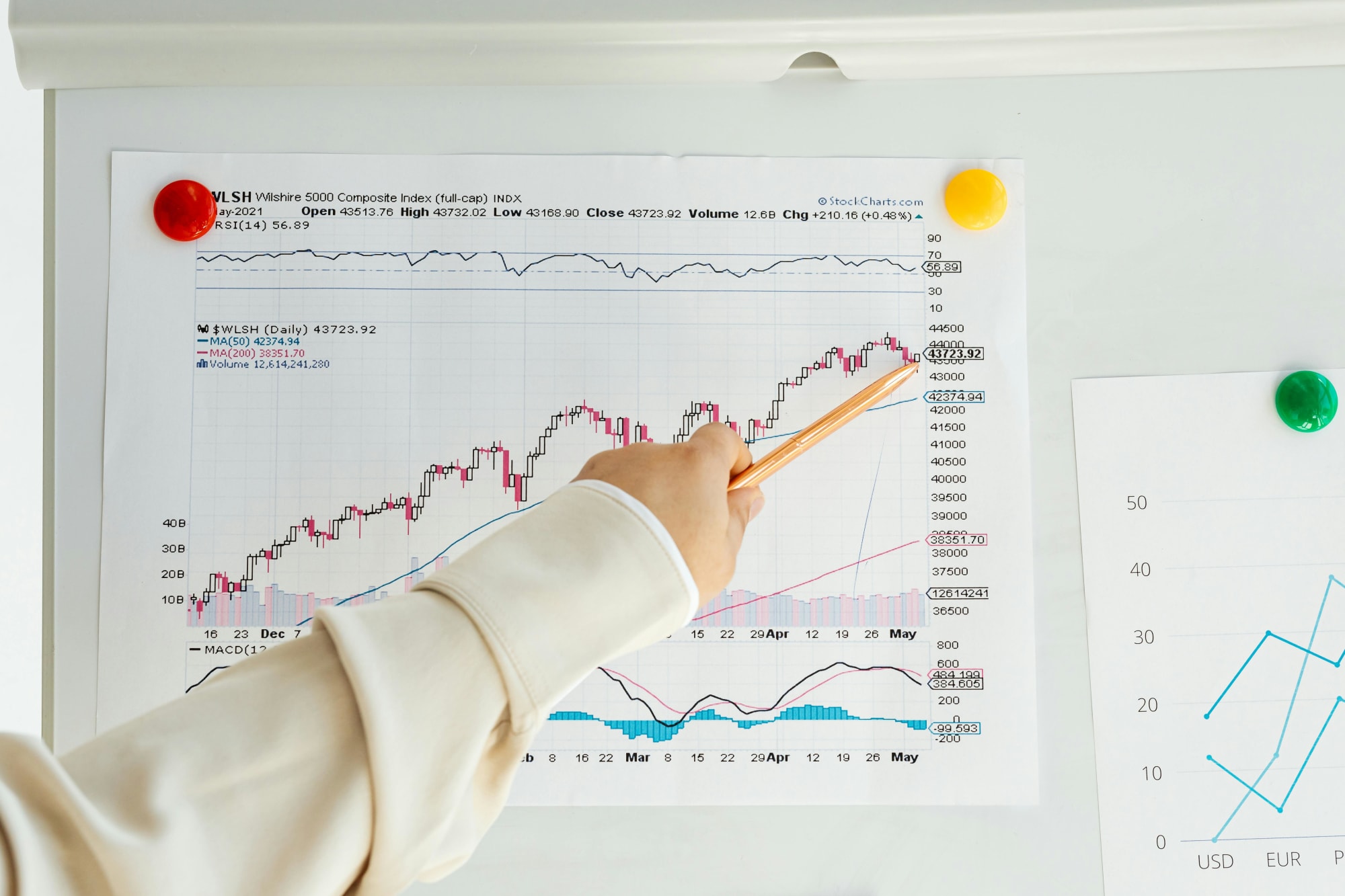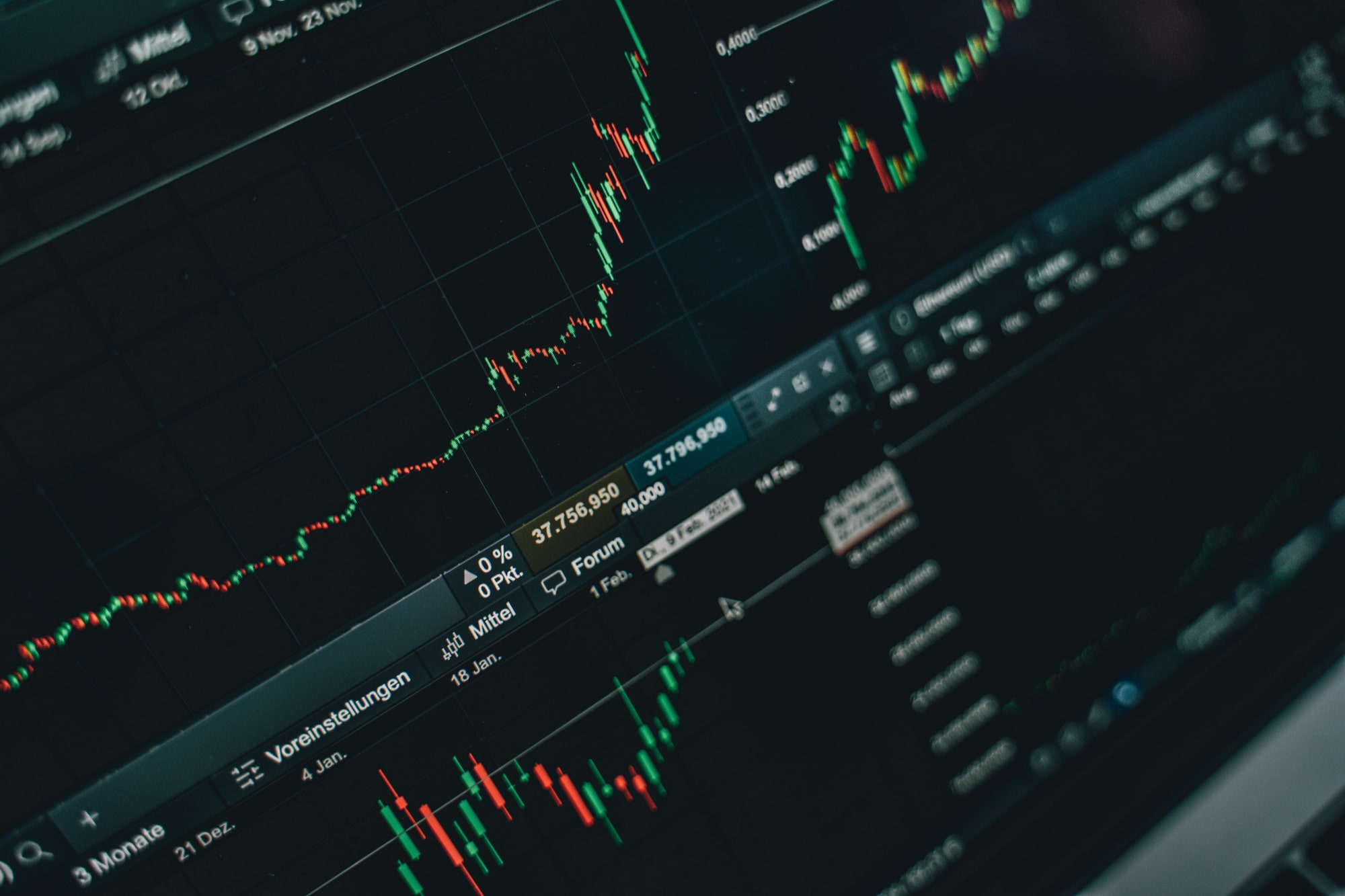Invest
Women and COVID: Where men glow and women suffer
Not only have women been at the frontline of Australia’s response to the coronavirus pandemic – nearly four in five workers in health care and social assistance are women – but they’ve borne the brunt of job losses, with female dominated industries other than healthcare among the hardest hit since the pandemic began.
Women and COVID: Where men glow and women suffer
Not only have women been at the frontline of Australia’s response to the coronavirus pandemic – nearly four in five workers in health care and social assistance are women – but they’ve borne the brunt of job losses, with female dominated industries other than healthcare among the hardest hit since the pandemic began.

While the coronavirus has resulted in job losses and isolation for people around the globe, it has disproportionately affected women, with figures worldwide pointing to an uneven distribution of the devastation being wrought by the virus. Unlike the previous recession, which led to greater job losses for men, the current downturn is hurting women’s employment, with ramifications said to be “gigantic” for women’s economic equality.
With over half a million Aussies losing their jobs in April, at the onset of the crisis, a majority (55 per cent) were women. Women’s underemployment ratio – where workers would prefer to work more hours – sat at an unprecedented 15 per cent at the height of the crisis in April, compared with 12.6 per cent for men. Moreover, in Victoria in July, women lost jobs at more than four times the rate of men.
In early August, at the onset of Victoria’s second lockdown, the CEO of Gender Equity Victoria, Tanja Kovac, said, “This is a difficult week for all Victorians, working together to reduce the spread of the virus in our community, but it’s especially tough for women who are losing full-time employment at a higher rate than men across the state (7.3 per cent for women compared to 5.8 per cent for men) and are shouldering more of the care, home education responsibility and risk of violence at home.”
As the Financy Women’s Index points out, the COVID crisis has battered sectors where women’s employment is concentrated, such as accommodation and food services and arts and recreation, giving rise to a high level of anxiety about what it means for the longer-term financial security of women.

And rightly so, because as Financy has found, in just four months of the crisis, four years have been added to the estimated time it will take women to achieve economic equality, blowing out the figure to a staggering 36 years.
By contrast, it is expected to take 32 years for equality to be achieved in unpaid work, 26 years in the gender pay gap, eight years in the underemployment rate and 18 years in superannuation, 21 years in the participation rate and five years for women on boards.
“As the Financy Women’s Index shows, COVID-19 has only exacerbated the divide between men and women in paid and unpaid work,” says Nicki Hutley, partner at Deloitte Access Economics.
“Even if we return to the path of improvement seen before the pandemic, we remain a full generation away from achieving equality.”
As a result, commentators in the media have labelled the current economic downturn as a “Pink” or “She”-recession.
Bianca Hartge-Hazelman, founder of the Financy Women’s Index, agrees with their assessment.
“In my opinion, these are valid concerns because they highlight the current financial disadvantages facing women at a time of weakness,” Ms Hartge-Hazelman says.
“What worries me at this point is where we’re likely to emerge from this rolling pandemic and what it means for women’s progress and the destination of financial equality.”
Women take lion’s share of housework
Disturbingly, during the lockdown, women’s unpaid labour surged, with 56 per cent (versus 38 per cent of men) working from home, often taking on childcare responsibilities.
Senior economist at AMP Capital Diana Mousina opines that while pre-COVID working and non-working women took the lion’s share of housework and child-related responsibilities, the pandemic has just exacerbated these impacts.
“School closures, concern about infecting grandparents or concerns about sending children to childcare have meant roaming children while parents are working from home,” Ms Mousina notes.
“It appears that women have again had the larger share of child-related responsibilities during COVID-19.
“There are some articles flagging academic journal submissions have dropped off more for women than men, showing productivity has been dented potentially from having these other non-work caring responsibilities. Lower productivity growth is an important driver for longer-term wages growth.”
In her personal note published in the Financy Women’s Index in August, Ms Mousina admits that she can personally attest to these productivity challenges.
“The peak of the pandemic in March-April was very tiring, trying to manage television and radio interviews with an energetic two-year-old singing in the background,” she says.
The national report, The Worsening of Australian Women’s Experiences under COVID-19, backs up these findings, revealing that Australian women’s larger care burdens – to children, spouses, and relatives – have resulted in increasing demands for their labour under lockdown, yet much of this work is unrecognised and unpaid.
The study – prepared by Dr Andrea Carson, a La Trobe University political scientist; Associate Professor at the University of Melbourne, Leah Ruppanner; and Dr Shaun Ratcliff of the University of Sydney – revealed that not only did women experience job losses at higher rates than men, while taking on a majority of housework, their health has been severely impacted by the pandemic, with Victorian women particularly vulnerable to anxiety and restless sleep.
“Under the pandemic, Australian women’s work, family and health lives have suffered,” the report reads.
“Moreover, Victorian women are particularly vulnerable to compounding disadvantage – job loss, business disruption, higher childcare and housework burdens, and more adverse health effects such as sleeplessness and anxiety.”
Women to bare brunt of low wage growth
Worryingly, not only are women staying home for the time being, Financy has flagged a significant exodus by women from the workforce altogether. This, the organisation has warned, could lead to an outcome that will endure beyond the pandemic – lower wages growth.
“With higher unemployment now entrenched in Australia for another four or five years, downwards pressure on wages has been exacerbated. And, if we fail to act to address gender imbalances, women will bear the brunt of this,” says Ms Hutley.
She warns that COVID-19 has only exacerbated the divide between men and women on this front, and that even if we return to the path of improvement seen before the pandemic, we are still a full generation away from achieving equality.
“For many women, caring is a choice not a chore. But for those who wish to pursue a career, there needs to be greater support.
“That means access to affordable childcare, greater flexibility in the workplace, as well as a cultural shift in what is ‘women’s work’,” says Ms Hutley.
“I am encouraged by Millennial attitudes, which seem to be shifting here.”
But The Worsening of Australian Women’s Experiences report also points to an increasing worry among women that their jobs will not only disappear, but that they may never come back.
Namely, nationally, 33 per cent women (compared with 28 per cent of men) are worried they do not have the right skills for the future of work.
But these stark socio-economic inequalities are having far worse consequences, placing the most vulnerable groups of women at an even higher risk of violence.
Domestic violence
According to a recent UN report, emerging data shows that since the outbreak of COVID-19 in March, reports of domestic violence have increased by 30 per cent in France.
In Cyprus and Singapore, helplines have registered an increase in calls of 30 per cent and 33 per cent, respectively. In Argentina, emergency calls for domestic violence cases have increased by 25 per cent since the lockdown on 20 March, while increased cases of domestic violence and demand for emergency shelter have also been reported in Canada, Germany, Spain, the UK and the US.
In Australia, a Women’s Safety New South Wales survey reveals that 45 per cent of frontline workers have reported increased requests for help by survivors, and 86 per cent have reported that the cases received have increased in their level of complexity during the COVID-19 outbreak.
“At the start of the pandemic it was not too dissimilar to usual but as time went on more women began reaching out for support, especially those with domestic and family violence,” an outer metropolitan domestic and family violence specialist says.
In September, the organisation noted that almost two months since the easing of COVID-19 restrictions in NSW, many victims of domestic and family violence continue to remain at home with their abusers. But, given that the economic and financial impacts of COVID-19 are still ongoing, further concerns about a potential worsening of abuse and ongoing barriers in accessing services and support are being raised.
“Sometimes we are the only contact people have. Families are interstate and they cannot get to them. Services are under strain by the amount of extra calls. Women are unable to leave the home as easily if they have care commitments with vulnerable family members,” a regional domestic and family violence specialist says.
Responding to reports of increased violence, Professor Cathy Humphreys from University of Melbourne published an article in August titled ‘Poverty is trapping women in abusive relationships’.
Ms Humphreys drew attention to a survey of 15,000 Australian women by the Australian Institute of Criminology (AIC), which found that two-thirds of those reporting violence had suffered an increase in violent behaviour during the first three months of the pandemic lockdown. A further survey of Victorian family violence workers by researchers at Monash University found a similar pattern of escalating violence.
“As the door closes on women’s employment, the door also can close on leaving an abusive relationship,” Ms Humphreys wrote.
The stark reality, the UN says, is that even in the aftermath of the crisis, violence against women and girls will continue to rise, at the same time as unemployment, financial strains and insecurity increase.
The financial impact of COVID-19 is also expected to affect the capacity of local women’s organisations, to advocate for policy reforms on violence against women and girls and for service provision to survivors of violence over the long term.
Government response
While the Australian government has been praised for dedicated funding to support women experiencing violence and to organisations providing services, its contribution to boosting women’s participation in the workplace has been slammed by gender equality advocates.
The 2020-21 federal budget has set aside $231 million over four years to address the disproportionate economic affect of the COVID crisis on women.
Handing down the budget in early October, Treasurer Josh Frydenberg acknowledged that women made up the majority of those who lost their jobs during the crisis and promised to bring female workforce participation to its pre-COVID “record high”.
His plan to do so focused on three key areas: new cadetships and apprenticeships for women in science, technology, engineering and mathematics; job creation and entrepreneurialism; and women’s safety at work and at home.
“The 2020 Women’s Economic Security Statement will create more opportunities and choices for women, not just for the recovery but for generations ahead,” Mr Frydenberg said.
However, not everyone agrees. “It seems women have been left out of #Budget2020 even though they have been on the front lines fighting the pandemic & they have lost the most jobs,” tweeted the secretary of the Australian Council of Trade Unions, Sally McManus, at the time.
“The Morrison government is spending half as much on the women’s economic security package as they are on a new computer system for Services Australia,” tweeted Labor senator Jenny McAllister.
And, in the days following the budget, the hashtag #CredibleWomen went viral, born out of frustration expressed by many that the budget failed to deliver for women.
More accurately, the hashtag followed the Prime Minister’s response to an article written by advocate and journalist Georgie Dent, who drew attention to a stark fact – that a rough one-third of 1 per cent of the whole budget has been allocated to women’s economic security.
According to Ms Dent, she subsequently received a call from the PM who said that “no one credible” was making such a complaint, and that “nothing in the budget is gendered”.
Within just a few hours, the hashtag #CredibleWomen was born, gaining over 1,000 angry and credible responses to the budget’s dismissal of woman from both sides of the bench.
What many pointed out, including Ms Dent, is that a budget must be ‘gendered’, meaning it must analyse the discrepancies between men and women, allocating funding where necessary.
Quoting the former sex discrimination commissioner Elizabeth Broderick, Ms Dent told media at the time: “If we don’t actively and intentionally include women, the system will exclude them.”
First published in IPA's Public Accountant magazine
About the author

About the author


Economy
RBA's hawkish stance reflects inflation concerns, State Street economist comments
In a recent statement, the Reserve Bank of Australia (RBA) has signaled a hawkish stance on interest rates, drawing insights from financial experts about the implications for Australia's economic ...Read more

Economy
Navigating the inflation maze: How CFOs can outsmart economic hurdles in Australia
Fresh inflation data have cooled expectations of near-term rate cuts in Australia, intensifying pressure on margins, capital allocation and demand. Rather than wait for monetary relief that may not ...Read more

Economy
Inflation concerns rise as Australia's CPI climbs to 3.8% in October
Australia's latest Consumer Price Index (CPI) figures have sent ripples through the economy, with headline inflation accelerating to 3.8% year-on-year in October, up from 3.6% in September. The data, ...Read more

Economy
October CPI results pose challenges for RBA’s monetary policy stance
In a surprising turn of events, the October Consumer Price Index (CPI) data has raised eyebrows among economists and market strategists, revealing stronger-than-expected inflationary pressures in ...Read more

Economy
Global deal activity declines by 6% amid economic uncertainty, reports GlobalData
In a year characterised by economic turbulence and evolving market conditions, global deal activity has witnessed a notable downturn during the first ten months of 2025. According to GlobalData, a ...Read more

Economy
Australia’s softening labour market puts another RBA cut in play — here’s what business should do now
A four-year high in unemployment has revived expectations the Reserve Bank could deliver another rate cut as soon as November. With quarterly GDP growth running at 0.6 per cent and annual growth at ...Read more

Economy
Rising CPI reinforces RBA’s stance as rate cut expectations remain: State Street
State Street Global Advisors says the Reserve Bank of Australia (RBA) is likely to hold its current policy outlook following the release of September quarter inflation data, which showed an unexpected ...Read more

Economy
NSW SES boosts tsunami preparedness ahead of World Tsunami Awareness Day
As World Tsunami Awareness Day approaches on 5 November, the New South Wales State Emergency Service (NSW SES) is ramping up efforts to enhance tsunami preparedness along the east coastRead more

Economy
RBA's hawkish stance reflects inflation concerns, State Street economist comments
In a recent statement, the Reserve Bank of Australia (RBA) has signaled a hawkish stance on interest rates, drawing insights from financial experts about the implications for Australia's economic ...Read more

Economy
Navigating the inflation maze: How CFOs can outsmart economic hurdles in Australia
Fresh inflation data have cooled expectations of near-term rate cuts in Australia, intensifying pressure on margins, capital allocation and demand. Rather than wait for monetary relief that may not ...Read more

Economy
Inflation concerns rise as Australia's CPI climbs to 3.8% in October
Australia's latest Consumer Price Index (CPI) figures have sent ripples through the economy, with headline inflation accelerating to 3.8% year-on-year in October, up from 3.6% in September. The data, ...Read more

Economy
October CPI results pose challenges for RBA’s monetary policy stance
In a surprising turn of events, the October Consumer Price Index (CPI) data has raised eyebrows among economists and market strategists, revealing stronger-than-expected inflationary pressures in ...Read more

Economy
Global deal activity declines by 6% amid economic uncertainty, reports GlobalData
In a year characterised by economic turbulence and evolving market conditions, global deal activity has witnessed a notable downturn during the first ten months of 2025. According to GlobalData, a ...Read more

Economy
Australia’s softening labour market puts another RBA cut in play — here’s what business should do now
A four-year high in unemployment has revived expectations the Reserve Bank could deliver another rate cut as soon as November. With quarterly GDP growth running at 0.6 per cent and annual growth at ...Read more

Economy
Rising CPI reinforces RBA’s stance as rate cut expectations remain: State Street
State Street Global Advisors says the Reserve Bank of Australia (RBA) is likely to hold its current policy outlook following the release of September quarter inflation data, which showed an unexpected ...Read more

Economy
NSW SES boosts tsunami preparedness ahead of World Tsunami Awareness Day
As World Tsunami Awareness Day approaches on 5 November, the New South Wales State Emergency Service (NSW SES) is ramping up efforts to enhance tsunami preparedness along the east coastRead more








